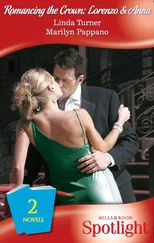1 ...7 8 9 11 12 13 ...24 Jane’s visits to Chelsea, and the return visits to Seymour Place made by the Queen dowager, gave her the opportunity to get to know Elizabeth much better than she had hitherto, although she was acquainted already with some of the princess’s personal staff. Elizabeth’s governess Kate Astley and husband John were old friends of Jane’s family; John Astley would later write a treatise on horsemanship and may have given them both riding lessons. 2 But the thirteen-year-old princess, who would one day govern the destinies of Katherine and Mary Grey, did not grow close to Jane. A freshskinned adolescent, with her father’s red gold hair and her mother’s famous black eyes, Elizabeth was too old to wish to play with Jane, and was, in any case, unusually self-contained. This gave her a reputation for arrogance in some quarters, but what it reflected principally was anxiety. 3 Elizabeth felt acutely the precariousness of her position.
In the first years of her life Elizabeth had gone from being her father’s heir and the daughter of his most beloved wife, to the bastard child of a traitor-adulteress. This had changed again in 1544, when she was restored in line of succession, but she remained illegitimate in law and was now an orphan, dependent on the goodwill of others. Although she loved Catherine Parr for the kindness she showed, Elizabeth was disgusted at her stepmother’s hasty remarriage and, as she observed to her half-sister, Mary, based in St James’s, she felt there was nothing they could say about it, without putting themselves in danger. Sudeley was the brother of the Protector, whom they had little reason to trust, and who had kept the lands and income Elizabeth’s father had left her, largely in his own control. Elizabeth, utterly powerless, was obliged to make the best of what was to her an uncomfortable situation at Chelsea - and Jane was not a particularly welcome presence in Elizabeth’s bleak and uncertain world. Under the terms of Henry’s will, Jane Grey was Elizabeth’s heir, and Elizabeth had seen already how one heir could leapfrog another, from one parliamentary statute to the next. As Elizabeth was notoriously vain, it also can’t have helped that Jane was proving more adept at her studies than either she or the King, both of whom were considered exceptionally intelligent. *
Jane’s quick mind was absorbing a curriculum of studies that shared similarities with those of Edward, who was now reading Justin the Martyr’s summary of Greek history and copying phrases from Cicero’s Offices and the Tusculan Disputations . This progress in Latin and Greek was matched by her religious education. Evangelicals were enthusiastic for women to be involved in the study of theology and Catherine Parr set Jane an impressive example. For years she had applied her knowledge of Scripture to the promotion of Church reform, and much of the autumn in Catherine’s household was taken up with her religious projects. The translation of Erasmus’s Paraphrases of the New Testament , which she had overseen (and to which the Princess Mary had contributed), was prepared for publication (and would prove a bestseller). 4 But she was also completing an original work of her own, written when Henry was alive, and which she had not then dared make public. Entitled The Lamentation of a Sinner , it described her search for salvation. It was distinctly Lutheran in tone, and Henry had considered Luther a heretic, but Jane’s step-grandmother, Katherine Suffolk, helped persuade the Queen dowager the time was ripe for its publication. 5
For the first time Jane had a sense of what it was like to be a member of a network of clever women, working together and propagating new and exciting religious ideas. 6 The evangelical reformation, meanwhile, was proceeding apace all around her. The ambassador to the Hapsburg Emperor, Charles V, complained that the preachers giving the public sermons at court seemed ‘to vie with each other as to who can abuse most strongly the old religion’. 7 By July they had asserted the evangelical belief that salvation was not attainable by man through his own efforts, such as charitable works, but was the gift of God for an elect few. By August the use of the rosary was abolished and the Mass was under attack, with ‘much speaking against the sacrament of the altar, that some called it Jack in the box, with divers other shameful names’. 8 Stained-glass windows in churches were smashed and the carved figures of Christ torn down. The iconography of God was now idolatry, but that of the King and the nobility remained everywhere. Indeed the arms of the King were now being painted on church walls. Bishop Gardiner questioned the logic of this to the Privy Council. He also warned it was surely illegal to break Henry VIII’s religious settlement during Edward’s minority, but such pleas and arguments fell on deaf ears.
The Bible did not raise any objections to heraldic symbols, but to objects worshipped as God. Praying before a statue or image might not be to worship it, but it could appear close to it. As for the illegality of changing the national religious culture, Somerset and his allies believed that Edward would learn to applaud their actions before he came to his majority. Images of saints, with which Edward had been surrounded, were removed from his rooms, and his mind was being as cleansed of the past as his environment. Edward’s reformist tutor, the gaunt John Cheke, was ‘always at his elbow’ whispering to him in his chapel, ‘and wherever else he went, to inform and teach him’. Edward responded eagerly, but the evangelicals needed to project Edward as the font of reform, not merely as an obedient pupil. It was claimed, therefore, that his ability to absorb what he was taught was such that, ‘it should seem he were already a [spiritual] father’ rather than a boy, ‘not yet ten years old’. 9 The radical Dorset would have liked to see still faster progress in religion than was being made, but he also had more earthly matters to consider. In particular he had concerns that Sudeley was proving unable to develop Jane’s friendship with the King.
Somerset had barred Catherine Parr and Sudeley from access to Edward. This was miserable for the boy. Catherine was the only mother Edward had ever known, his Mater Carissima , who, he had once said, held ‘the chiefest place in my heart’. In getting Edward to write a letter giving them permission to marry, however, Sudeley had proven how dangerous their access to the King could be. The ability to shape the King’s mind, to fill it with carefully coloured opinions and edited information that favoured one’s own interests and condemned one’s enemies, was central to the operation of politics in an autocratic monarchy. While the King’s mind was young and impressionable, as Edward’s was, it was all the more important to control access to him. Sudeley was therefore kept well away from him. But he assured Dorset that he nevertheless remained the King’s favourite uncle. Edward had complained, he said, ‘divers times’ that ‘his uncle of Somerset kept him very straight’ and would not let him have money when he asked for it. 10 Sudeley explained he was thus able to earn Edward’s gratitude with gifts of £10, £20, even £40, slipped to him through John Fowler, one of the Grooms of the Privy Chamber. While Edward was fond of him, however, Sudeley knew that the truth was he had to place new and higher stakes if he was to achieve the power he wanted.
Katherine and Mary Grey were used to their sister leaving them to spend periods at court. But Jane’s leaving for Seymour Place was of a different order and surely more deeply felt. The ordinary memories of everyday life, such as the dancing horse, taken from Bradgate by one of the servants to entertain the townsfolk of Leicester, were less often shared. 11 For Frances also, it must have been hard. Jane was still very young and, no matter how commonplace it was to send a child away, she had to overcome her natural instincts to do what was considered best for her eldest daughter. Even when Frances was away at court, or staying with friends, she knew her children, whether at Bradgate or Dorset House, were being cared for in an environment she had some control over. Giving that up to a known womaniser like Sudeley was a cause for anxiety. But things were far worse at Seymour Place than she ever suspected.
Читать дальше












